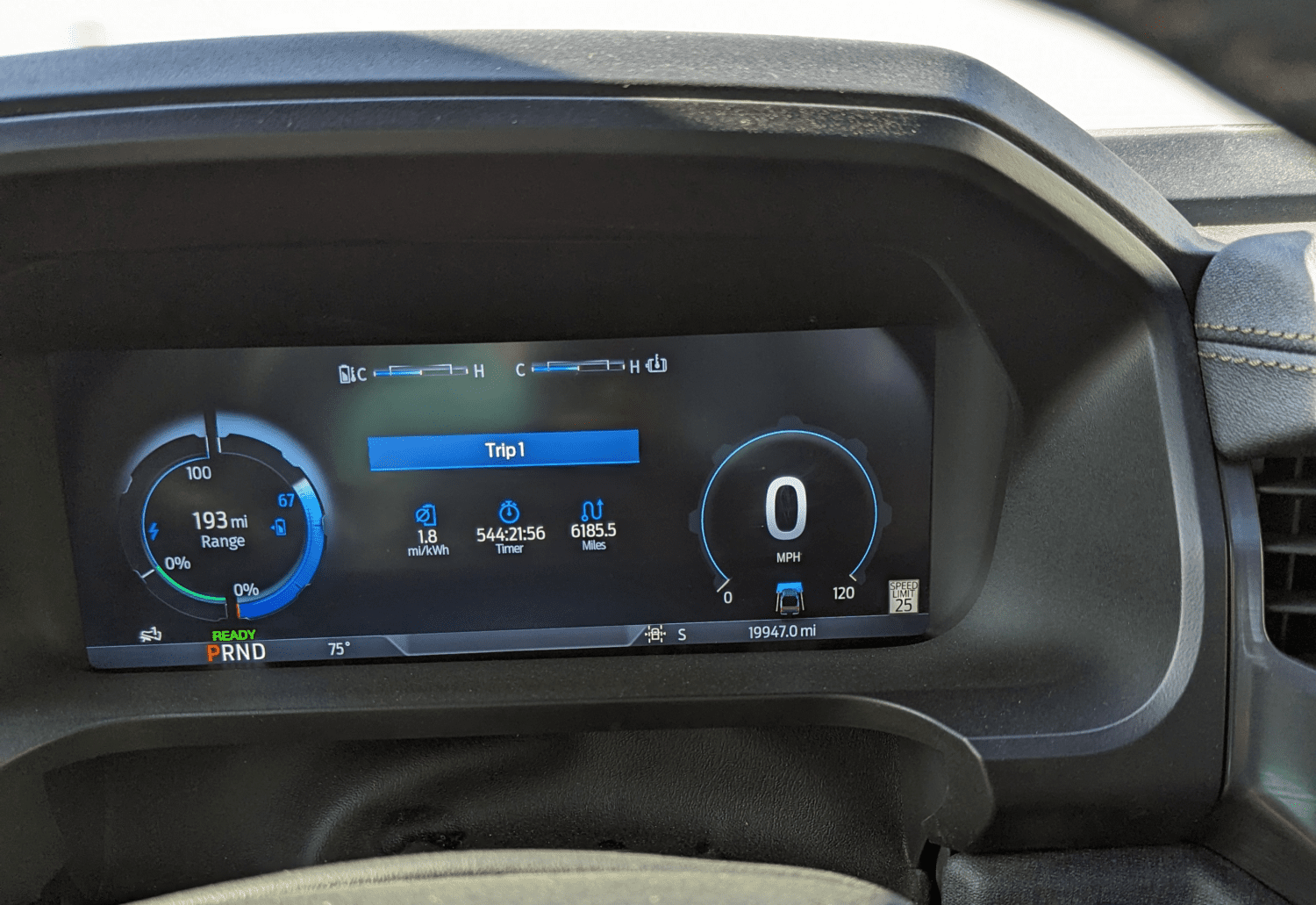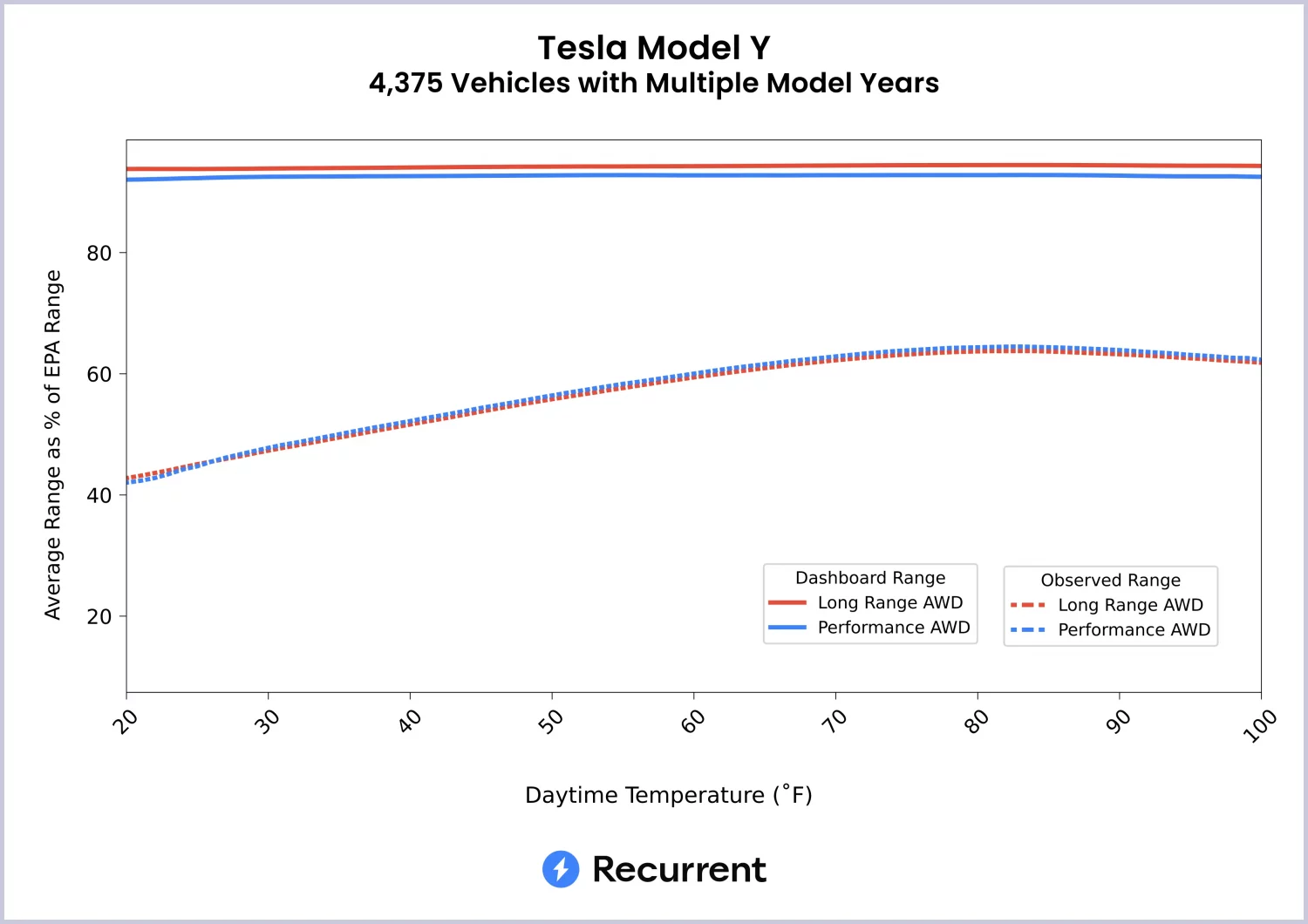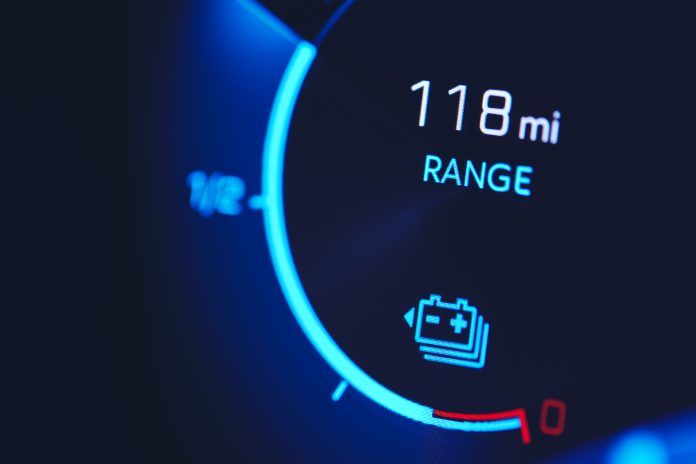Even though an EV’s range seems like it should be a single number, there are actually three types of electric vehicle range that can vary by 40% from each other. Understandably, this can be a source of confusion for new EV drivers. Until buyers and sellers understand them, range anxiety – particularly with used cars – will limit adoption and satisfaction.
The good news is that education can change that.
This article explores the three common types of range and how people can use them when buying or selling an electric car.
Sticker range
Sticker range (or EPA range in the U.S.), is an estimate that you would likely find on a window sticker or vehicle summary. It is established by government testing or the carmaker’s recommendation. Sticker values are used in all types of vehicles, including those with combustion engines, like 30 miles per gallon (mpg).
In the U.S., the EPA publishes these sticker ranges for each new vehicle model and model year. Here are several examples.
- 2021 Tesla Model X Long Range = 371 miles on full charge
- 2022 Rivian R1T = 314 miles on full charge
- 2023 Volkswagen ID.4 Pro = 275 miles on full charge
The issue is that sticker range is almost never correct because it’s a single lab test, conducted under very specific conditions, on a brand-new car.
Dashboard range
Dashboard range is the range estimate calculated by the vehicle’s own software and presented for the driver on the dashboard or mobile app. Think of it much like you would the mileage meter on a combustion engine car: 300 miles till empty.
Electric cars have a sophisticated battery management system (BMS) that uses a variety of factors about the car and your driving conditions to provide an estimate of remaining range. Depending on the car, factors may include the age of the car, the state of the battery, recent efficiency, current terrain and temperature.


F-150 Lightning Dashboard courtesy of Recurrent
The accuracy of the Dashboard range is known to vary by manufacturer. Some show consistent values that do not change with driving and environmental factors while others are very sensitive to these changes and try to reflect changing conditions to the driver.


Tesla range courtesy of Recurrent


Chevy Bolt range courtesy of Recurrent
These two charts are from a winter EV range study that compared popular vehicles in a variety of temperatures. The Model X shows almost no change to the dashboard range based on outdoor temperature while the Bolt continually adjusts its estimate based on the weather.
Actual range
Actual range is the reality on any given day. In most ways, actual range fluctuates much the same as in a gas car. Any car has to follow the laws of physics, and will get a lower range when driving uphill, on low pressure tires or into the wind.
For an EV, the main difference is that the effects on range are more noticeable since range is front and center on the dashboard and on your mind. On a chilly day where I live in the Midwest, the actual range that a car can drive would be influenced by lots of factors.
- Outdoor temperature
- Interior cabin temperature setting
- Tire temperature
- Tire pressure
- Wind direction and speed
Actual range gets even more complicated for used EVs since a battery slowly degrades during ownership – albeit not as much as people think. As my electric truck ages, the actual range will likely decrease 1-2% per year, and people should understand that when shopping for used cars. A PhD coworker of mine wrote a smart article about battery health in electric cars.
Actual range is notoriously hard to get at since it changes for every trip and from car to car. Even two cars of the same make, model and year have different actual ranges.
Which EV range should I use?
The short answer is all three of them. Each provides important information for buying, owning and selling an electric car.
EV shoppers should understand that the sticker range is a loose estimate, which is often the most optimistic. Several auto trades do range testing, like Edmunds, so you can often find the vehicle you’re considering to understand how accurate the sticker range is for that model.
EV owners will learn their car’s actual range over time, and can use free tools like Recurrent to shorten the learning curve.
EV sellers should help buyers understand all three ranges. It is often our job to help make this less confusing. And, if you get turned around, send me a message and I’ll help.



